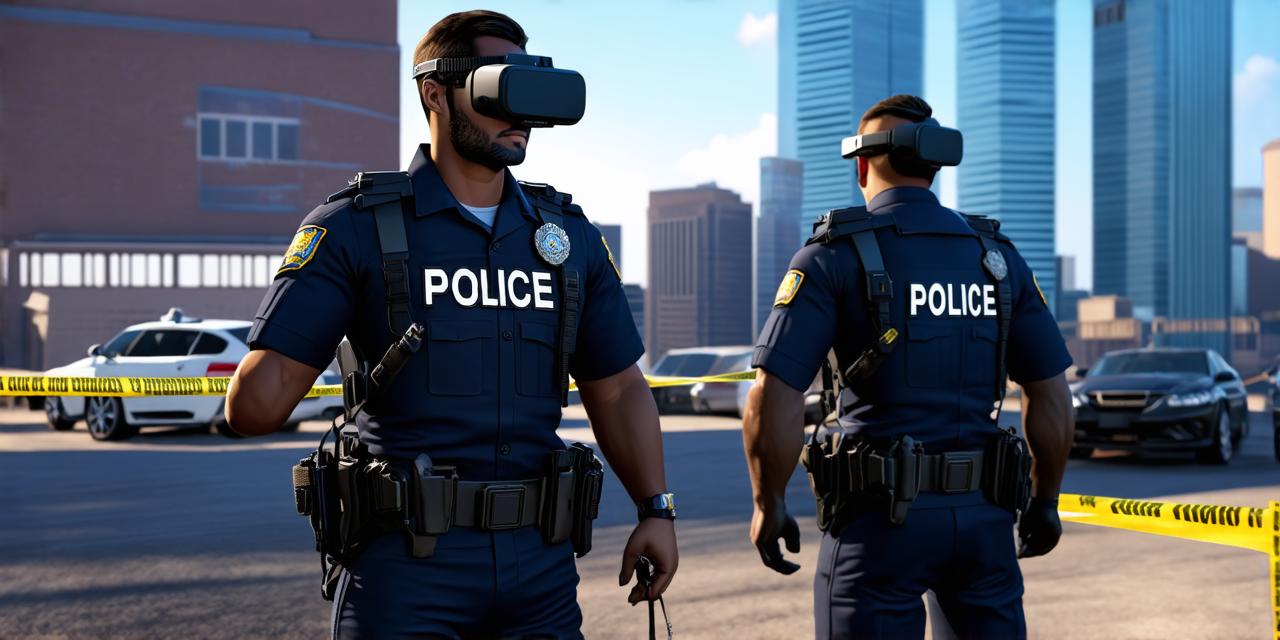Introduction
Virtual reality (VR) technology is revolutionizing the way we learn and train. Its immersive and interactive nature makes it an ideal tool for enhancing law enforcement training. By providing a safe, controlled environment for trainees to practice their skills in realistic scenarios, VR technology can help improve their performance and prepare them for real-life situations.
The Benefits of Virtual Reality Training
Virtual reality technology offers several advantages that make it an ideal tool for enhancing law enforcement training. These include:
-
Realistic Scenarios
-
Cost-Effective
-
Customizable
-
Safe Learning Environment
3. Customizable
VR technology can be customized to meet the specific needs of law enforcement agencies. This allows trainers to create scenarios that are tailored to the unique challenges and risks faced by their officers. For example, VR simulations can be used to train officers on how to handle specific types of criminals or weapons, or to simulate different types of terrain or weather conditions.
4. Safe Learning Environment
Virtual reality technology provides a safe learning environment for trainees. By creating simulations that are controlled and monitored by trained professionals, VR technology can help reduce the risk of injury or harm to officers. This allows trainees to practice their skills in a low-risk environment, which can improve their confidence and performance.
Real-Life Examples of Virtual Reality Training
Virtual reality technology is already being used in law enforcement training to enhance the skills and abilities of officers. Here are some real-life examples:
-
New York City Police Department (NYPD)
-
Los Angeles County Sheriff’s Department (LASD)
-
Royal Canadian Mounted Police (RCMP)
Summary
Virtual reality technology offers several advantages that make it an ideal tool for enhancing law enforcement training. By providing a safe, controlled environment for trainees to practice their skills in realistic scenarios, VR technology can help improve their performance and prepare them for real-life situations. As we have seen from real-life examples of VR training in action, virtual reality technology is already being used by law enforcement agencies around the world to improve the skills and abilities of officers.
FAQs
1. How does virtual reality technology work?
Virtual reality technology works by creating an immersive environment that simulates real-life situations. This allows trainees to practice their skills in a safe, controlled environment that is customized to meet the specific needs of their training program.
2. What types of scenarios can be created using virtual reality technology?
Virtual reality technology can create highly realistic scenarios that simulate real-life situations such as high-speed chases, hostage negotiations, and active shooter situations. These simulations can be customized to meet the specific needs of law enforcement agencies.
3. How effective is virtual reality training compared to traditional methods?
Virtual reality training has been shown to be just as effective as traditional methods such as live fire exercises. By providing a safe, controlled environment for trainees to practice their skills in realistic scenarios, VR technology can help improve performance and prepare officers for real-life situations.
4. How much does virtual reality training cost?
The cost of virtual reality training varies depending on the specific needs of law enforcement agencies. However, virtual reality technology can provide a cost-effective alternative to traditional methods such as live fire exercises, which can save money in the long run.
